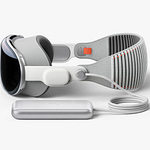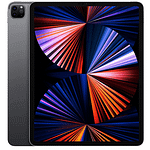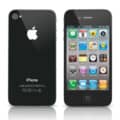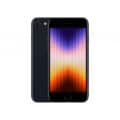- All Apple Devices
- iPad
- Apple iPad Air 3rd Generation (2019)
Apple iPad Air 3rd Generation (2019)
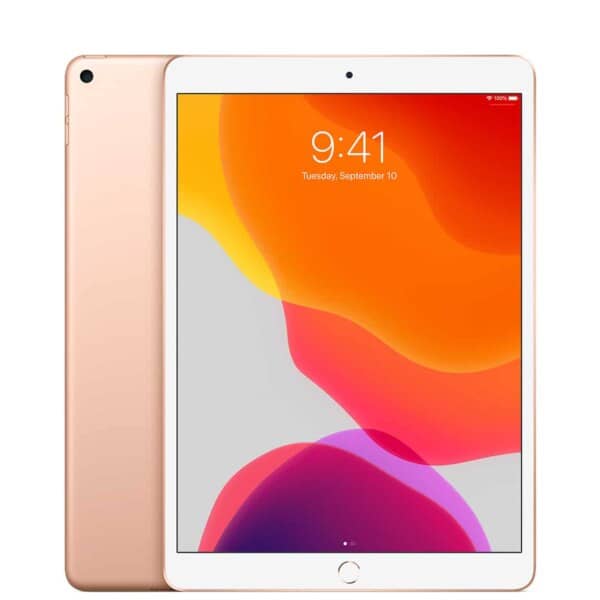
Apple iPad Air 3rd Generation (2019)
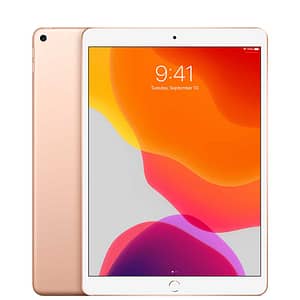
Product Brand: Apple
4.5
Pros
- Large, high-resolution 10.5-inch Retina display with True Tone technology
- Sleek and lightweight design with a thin bezel and slim profile
- Powerful A12 Bionic chip with Neural Engine for fast performance
- Long battery life for all-day use
- Runs iPadOS and has access to the App Store for a wide variety of apps
- Improved 8-megapixel camera for taking photos and videos
- Support for Siri and Touch ID
- Available in multiple storage options (64GB, 256GB)
- Compatible with the first-generation Apple Pencil and Smart Keyboard
- Supports the Smart Connector for connecting to accessories
- Offers Wi-Fi and cellular connectivity options
Cons
- No Face ID for secure authentication
- No support for FaceTime HD or ProMotion display
- No water resistance or dust protection rating
Apple iPad Air 3rd Generation (2019) Specs and Features
The Apple iPad Air 3rd Generation (2019) is a powerful and versatile tablet that offers a range of features for both personal and professional use. Here’s a breakdown of its key specifications and features:
Design:
The iPad Air 3 features a sleek and lightweight design, measuring 9.74 x 7.02 x 0.24 inches and weighing just under a pound. It comes in three different colors: silver, gold, and space gray.
Display:
The iPad Air 3 boasts a 10.5-inch Retina display with True Tone technology, which automatically adjusts the white balance to match the ambient light in your environment. The screen has a resolution of 2224 x 1668 pixels, providing crisp and clear visuals for all your favorite apps and media.
Processor:
The iPad Air 3 is powered by Apple’s A12 Bionic chip, which delivers fast and efficient performance for multitasking, gaming, and other demanding tasks. It also includes Apple’s Neural Engine technology, which enhances machine learning and AI capabilities.
Storage:
The iPad Air 3 comes with 64GB or 256GB of internal storage, depending on the model you choose. This provides ample space for storing all your favorite apps, games, and media files.
Connectivity:
The iPad Air 3 supports both Wi-Fi and cellular connectivity, allowing you to stay connected wherever you go. It also includes Bluetooth 5.0 technology for wireless communication with other devices.
Cameras:
The iPad Air 3 features an 8-megapixel rear camera and a 7-megapixel front camera, both of which support 1080p HD video recording. The cameras include features such as autofocus, HDR, and panorama mode.
Other features:
The iPad Air 3 includes a range of other features, such as Touch ID for secure authentication, Apple Pencil support for drawing and note-taking, and compatibility with the Smart Keyboard for a more laptop-like experience.
Overall, the Apple iPad Air 3rd Generation (2019) is a powerful and versatile tablet that offers a range of features for both personal and professional use. Its sleek design, high-quality display, powerful processor, and range of connectivity options make it a great choice for anyone in the market for a new tablet.
Here’s a summary of the technical specifications for the Apple iPad Air 3rd Generation (2019) tablet:
- Processor/CPU: Hexa-core (2×2.5 GHz Vortex + 4×1.6 GHz Tempest) Apple A12 Bionic
- RAM: 3 GB
- Internal Storage: 64 GB, 256 GB
- Display/Resolution: 10.5″ 1668×2224 pixels
- GPU/Graphics: PowerVR GXA6850
- Camera: 8MP
- Battery: 8134mAh Li-Po
- Colours: Space Gray, Silver, Gold
Full Technical Specifications
General
| Device Type | Tablet Computer |
| Models |
A2153, A2123, A2154, A2152, iPad11,3, iPad11,4 Also known as Apple iPad Air 3, iPad Air (3rd generation) Wi-Fi + Cellular & GPS: A2153, A2123 (Global); A2154 (China) Wi-Fi only, w/o GPS: A2152 (Global) |
| Announced | 18 March, 2019 |
| Released | 18 March, 2019 |
| Status | Available |
| Predecessor | iPad Air 2 |
| Successor | iPad Air (4th generation) |
| Generation | 3rd |
Design
| Type Design Type called form factor refers to a mobile phone's size, shape, and style as well as the layout and position of major components of phone. There are three major form factors seen in mobile phones => bar phones, folding phones and sliding phones. | Bar |
| Width |
250.6 mm (millimeters) 25.06 cm (centimeters) 0.822 ft (feet) 9.866 in (inches) |
| Height |
174.1 mm (millimeters) 17.41 cm (centimeters) 0.571 ft (feet) 6.854 in (inches) |
| Thickness |
6.1 mm (millimeters) 0.61 cm (centimeters) 0.02 ft (feet) 0.24 in (inches) |
| Volume |
266.14 cm³ (cubic centimeters) 16.16 in³ (cubic inches) |
| Weight |
464 g (grams) 1.02 lbs (pounds) 16.37 oz (ounces) 456 g (Wi-Fi) / 464 g (3G/LTE) (1.01 lb) |
| Protection |
Glass front Aluminum back Aluminum frame |
| Colors |
Space Gray Silver Gold |
Network
| SIM SIM (Subscriber Identity Module) is a small card that contains mobile network subscriber's account information. This allows the phone using the card to attach to a mobile network. The SIM card is most commonly associated with GSM and UMTS mobile networks. Moving a SIM card from one phone to another allows a subscriber to switch mobile phones without having to contact their mobile network carrier. SIM cards can also be used by a phone to store limited amounts of data, such as phone numbers and text messages. | Nano SIM |
| Number of SIM cards | 1 |
| GSM |
GSM 850 MHz GSM 900 MHz GSM 1800 MHz GSM 1900 MHz |
| UMTS (3G) |
UMTS 850 MHz UMTS 900 MHz UMTS 1700/2100 MHz UMTS 1900 MHz UMTS 2100 MHz |
| LTE (4G) |
LTE-TDD 1900 MHz (B39) LTE-TDD 2000 MHz (B34) LTE-TDD 2300 MHz (B40) LTE-TDD 2500 MHz (B41) LTE-TDD 2600 MHz (B38) LTE 700 MHz Class 13 LTE 700 MHz Class 17 LTE 800 MHz LTE 850 MHz LTE 900 MHz LTE 1700/2100 MHz LTE 1800 MHz LTE 1900 MHz LTE 2100 MHz LTE 2600 MHz LTE 1500 (B11) LTE 700 MHz (B12) LTE 700 MHz (B14) LTE 800 MHz (B18) LTE 800 MHz (B19) LTE 1500 (B21) LTE 1900+ MHz (B25) LTE 800 MHz (B26) LTE 700 MHz de (B29) LTE 2300 MHz (B30) LTE 1700/2100 MHz (B66) LTE 600 MHz (B71) |
Display
| Display Type Display Technology => A number of display technologies and types used in mobile phones => TFT (Thin Film Transistor), IPS (In-Place Switching), OLED (Organic Light Emitting Diode), AMOLED (Active-Matrix Organic Light-Emitting Diode), Super AMOLED (an even advanced version of AMOLED), Resistive Touchscreen (Resistive touchscreens contain two layer of conductive material with a very small gap between them which acts as a resistance), Capacitive Touchsceen (Capacitive touchscreen technology consists of a layer of glass coated with a transparent conductor) | IPS LCD |
| Size | 10.5 inch |
| Resolution | 1668 x 2224 pixels |
| Display Colors Display Colors is refers to the number of different shades of colors that the screen is capable of displaying => 64K colors, 256K colors and 16 million colors, Obviously 16M is highest available range of colors and better than others. | 24 bit, 16777216 colors |
| Aspect Ratio | 4:3 ratio |
| Display area | (~78.3% screen-to-body ratio) |
| Pixel Density Pixel Density (PPI) is refers to the concentration of pixels on a particular display, measured in pixels per inch (ppi). Pixel density is calculated by dividing the diagonal pixel resolution of a display by its diagonal size, higher pixel density better display quality. | 265 PPI density |
| Display Protection Display Protection => Gorilla Glass is a special alkali-aluminosilicate glass shield with exceptional damage resistance that helps protect mobile displays from scratches, drops, and bumps of everyday use, It is always better to go for a smartphone with Gorilla Glass for that added protection and peace of mind. |
Scratch-resistant glass Oleophobic coating |
| Features |
Capacitive Multi-touch Scratch resistant Retina display True Tone display 500 cd/m² Antireflective coating Oleophobic (lipophobic) coating Wide Color display (P3) |
Media
| Audio File Formats |
AAC (Advanced Audio Coding) AAC+ / aacPlus / HE-AAC v1 AMR / AMR-NB / GSM-AMR (Adaptive Multi-Rate, .amr, .3ga) AMR-WB (Adaptive Multi-Rate Wideband, .awb) eAAC+ / aacPlus v2 / HE-AAC v2 FLAC (Free Lossless Audio Codec, .flac) MIDI MP3 (MPEG-2 Audio Layer II, .mp3) OGG (.ogg, .ogv, .oga, .ogx, .spx, .opus) WMA (Windows Media Audio, .wma) WAV (Waveform Audio File Format, .wav, .wave) AIFF |
| Video File Formats |
3GPP (3rd Generation Partnership Project, .3gp) AVI (Audio Video Interleaved, .avi) H.263 H.264 / MPEG-4 Part 10 / AVC video QuickTime (.mov, .qt) MPEG-4 |
| FM Radio | No |
| Loudspeaker | Yes, with stereo speakers |
| 3.5mm Audio jack | Yes |
| Audio Features |
Loudspeaker Stereo speakers Dolby Digital Plus |
Rear/Main Camera
| Number of cameras | 1 |
| Sensor type | CMOS BSI (backside illumination) |
| Main cameras |
8 MP, f/2.4, 31mm (standard), 1.12µm, AF |
| Aperture | f/2.4 |
| Number of lenses | 5 |
| Image Resolution |
3264 x 2448 pixels 7.99 MP (megapixels) |
| Video Resolution |
1920 x 1080 pixels 2.07 MP (megapixels) |
| Video FPS | 30 fps (frames per second) |
| Other features |
Autofocus Continuous shooting Digital zoom Geotagging Panorama HDR Touch focus Face detection White balance settings ISO settings Exposure compensation Self-timer Scene mode Macro mode RAW Hybrid IR filter Noise reduction Sapphire crystal glass lens cover 1080p @ 120 fps |
Front/Selfie Camera
| Number of cameras | 1 |
| Main cameras |
7 MP, f/2.2, 31mm (standard) |
| Sensor type | CMOS BSI (backside illumination) |
| Aperture | f/2.2 |
| Image Resolution |
3088 x 2316 pixels 7.15 MP (megapixels) |
| Video Resolution |
1920 x 1080 pixels 2.07 MP (megapixels) |
| Video FPS | 30 fps (frames per second) |
Software
| Operating System OS => Every computer system run on a base software called Operating System (OS). Operating System controls all basic operations of the computer (such as smartphone, PDAs, tablet computers and other handheld devices). The Operating System allows the user to install and run third party applications (apps), apps are used to add new functionality to the device. | iOS 12.1.3, up to iPadOS 15.6, planned upgrade to iPadOS 16 |
| User Interface UI or user interface of a device is the look and feel of the on-screen menu system. How it works, its color scheme, how it responds to button presses, all of these things are part of the user interface. | Apple iPad OS |
Hardware
| Chipset Chipset is a group of integrated circuits designed to perform one or a more dedicated functions, often with real time computing constraints, Popular smartphones are equipped with more advanced embedded chipsets that can do many different tasks depending on their programming. | Apple A12 Bionic APL1W81, M12 motion coprocessor, Neural engine (8-core design) |
| SoC Process Technology | 7 nm (nanometers) |
| CPU CPU (Central Processing Unit) mostly known as processors, CPU processes instructions in order to carry out certain functions that make your device operate properly. Processors are often described as the brain of computers, smartphones and tablets, Smartphones and tablets rely on processors to carry out their every task, Processors are an incredibly important factor in selecting any type of computing device, including your smartphone. | 2.49 GHz Hexa-core (2x high performance Vortex + 4x high efficiency Tempest) |
| CPU bits | 64 bit |
| CPU cores | 6 |
| CPU frequency | 2500 MHz (megahertz) |
| Level 1 cache memory (L1) |
128 KB + 128 KB (kilobytes) |
| Level 2 cache memory (L2) |
8192 KB (kilobytes) 8 MB (megabytes) |
| GPU GPU (Graphics Processing Unit) is a single-chip processor designed to rapidly manipulate and alter memory to accelerate the creation of images in a frame buffer intended for output to a display, This includes things such as lighting effects, object transformations, and 3D motion. | PowerVR GXA6850 (octa-core graphics) |
| GPU frequency | 1100 MHz (megahertz) |
| RAM (Memory) RAM (Random Access Memory) is a type of computer memory that can be accessed randomly, any byte of memory can be accessed without touching the preceding bytes that allows information to be stored and accessed quickly from random locations. RAM is the most common type of memory found in computer systems, smartphones, tablets and other electronic devices. | 3 GB |
| RAM Type | LPDDR4X |
| RAM channels | Double channel |
| Internal Storage Internal Storage is a data storage space (flash memory) mostly used in smartphones, tablets and other electronic devices where operating system, apps, music, photos, videos, files and other user data Is stored. | 64/256 GB |
| Card Slot Memory Card Slot is a special slot for inserting a memory card. Memory cards allow you to expand the phone's built-in memory, A memory card (sometimes called a flash memory card or a storage card) is a small storage medium used to store data such as text, pictures, audio, and video, for use on small, portable or remote computing devices such as mobile phones, mp3 players, digital cameras. | No |
| Sensors Sensors are electronic components that detects and responds to some type of input from the physical environment. The specific input could be light, heat, motion, moisture, pressure and location, The output is generally a signal that is converted to use in computing systems, a location sensor, such as a GPS receiver is able to detect current location of your electronic device. |
Touch ID Three-axis gyro Accelerometer Barometer Ambient light sensor |
Connectivity
| Bluetooth Version | 5.0 |
| Bluetooth Features Bluetooth is a wireless communications technology for exchanging data between mobile phones, headsets, computers and other network devices over short distances without wires, Bluetooth technology was primarily designed to support simple wireless networking of personal consumer devices. |
A2DP (Advanced Audio Distribution Profile) LE (Low Energy) |
| Infrared Infrared connectivity is an old wireless technology used to connect two electronic devices. It uses a beam of infrared light to transmit information and so requires direct line of sight and operates only at close range. | No |
| Wi-Fi Wi-Fi is a popular wireless networking technology using radio waves to provide high-speed network connections that allows devices to communicate without cords or cables, Wi-Fi is increasingly becoming the preferred mode of internet connectivity all over the world. |
802.11a (IEEE 802.11a-1999) 802.11b (IEEE 802.11b-1999) 802.11g (IEEE 802.11g-2003) 802.11n (IEEE 802.11n-2009) 802.11n 5GHz 802.11ac (IEEE 802.11ac) Dual band Wi-Fi Hotspot 2x2 MiMO |
| USB | Lightning, USB 2.0 |
| GPS GPS The Global Positioning System is a satellite-based radio navigation system, GPS permits users to determine their position, velocity and the time 24 hours a day, in all weather, anywhere in the world, In order to locate your position, your device or GPS receiver must have a clear view of the sky. |
GPS A-GPS GLONASS |
| NFC NFC (Near field communication) is a set of standards for smartphones and similar devices to establish peer-to-peer radio communications with each other by touching them together or bringing them into proximity, usually no more than a few inch. | |
| HDMI HDMI (High-Definition Multimedia Interface) is a compact audio/video interface for transferring uncompressed video data and compressed or uncompressed digital audio data from a HDMI-compliant source device to a compatible computer monitor, video projector, digital television, or digital audio device. | No |
Battery or Power
| Battery Type Battery Type => Cell phones run on various kinds of batteries depending on the manufacturer, phone size or shape and features. There are basically four types of cell phone batteries => Lithium Polymer, Lithium Ion, Nickel Metal Hydride and Nickel Cadmium. | Li-Poly (Lithium Polymer) |
| Capacity Battery Capacity is a measure (typically in Amp-hr) of the charge stored by the battery, and is determined by the mass of active material contained in the battery. The battery capacity represents the maximum amount of energy that can be extracted from the battery under certain conditions. | 8134 mAh, (30.8 Wh) |
| Placement | Non-removable |
Disclaimer Note
We can not guarantee that the information on this page is 101% correct.

